Data Science and Machine Learning Internship ...
- 22k Enrolled Learners
- Weekend/Weekday
- Live Class
R is one of the most popular analytics tool. But apart from being used for analytics, R is also a programming language. With its growth in the IT industry, there is a booming demand for skilled or certified Data Scientists with an understanding of R as both, a data analytics tool and a programming language. In this blog, I will help you understand the various fundamentals of R programming for data science. In our previous blog, we have discussed Why do we need Analytics, What is Business Analytics, Why and Who uses R.
In this blog, we will understand the below core concepts of R Programming in the following sequence:
You may go through the webinar recording of R Programming Language where our instructor has explained the topics in a detailed manner with examples that will help you to understand R Programming better.
So let’s move forward and look at the first concept of R Programming – Variables.
Variables are nothing but a name to a memory location containing a value. A variable in R can store Numeric values, Complex Values, Words, Matrices and even a Table. Surprising, right?

The above image shows us how variables are created and how they are stored in different memory blocks. In R, we don’t have to declare a variable before we use it, unlike other programming languages like Java, C, C++, etc.
Let us move forward and try to understand what is a Data type and the various Data types supported in R.
In R, a variable itself is not declared of any data type, rather it gets the data type of the R object assigned to it. So R is called a dynamically typed language, which means that we can change a data type of the same variable again and again when using it in a program.
Data Types specifies which type of value a variable has and what type of mathematical, relational or logical operations can be applied to it without causing an error. There are many data types in R, However below are the most frequently used ones:
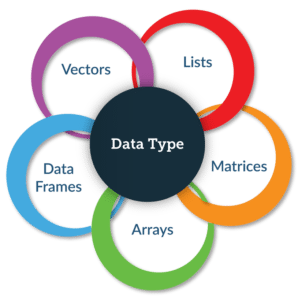 Let us now discuss each of these data types individually, starting from Vectors.
Let us now discuss each of these data types individually, starting from Vectors.
Vectors are the most basic R data objects and there are six types of atomic vectors. Below are the six atomic vectors:

Logical: It is used to store logical value like TRUE or FALSE.
Numeric: It is used to store both positive and negative numbers including real number.
Eg: 25, 7.1145 , 96547Integer: It holds all the integer values i.e. all the positive and negative whole numbers.
Eg: 45.479, -856.479 , 0Complex: These are of the form x + yi, where x and y are numeric and i represents the square root of -1.
Eg: 4+3iCharacter: It is used to store either a single character, group of characters(words) or a group of words together. The characters may be defined in either single quotes or double quotes.
Eg: "Edureka", 'R is Fun to learn'.In general, a vector is defined and initialized in the following manner:
Vtr = c(2, 5, 11 , 24) Or Vtr <- c(2, 5, 11 , 24)
Let us move forward and understand other data types in R.
Lists are quite similar to vectors, but Lists are the R objects which can contain elements of different types like − numbers, strings, vectors and another list inside it.
Eg:
Vtr <- c("Hello", 'Hi','How are you doing')
mylist <- list(Vtr, 22.5, 14965, TRUE)
mylist
Output:
[[1]] [1] 'Hello" "Hi" "How are you doing" [[2]] [1] 22.5 [[3]] [1] 14965 [[4]] [1] TRUE
Matrix is the R object in which the elements are arranged in a two-dimensional rectangular layout.
The basic syntax for creating a matrix in R is −
matrix(data, nrow, ncol, byrow, dimnames)
Where:
Example:
Mymatrix <- matrix(c(1:25), nrow = 5, ncol = 5, byrow = TRUE) Mymatrix
Output:
[,1] [,2] [,3] [,4] [,5] [1,] 1 2 3 4 5 [2,] 6 7 8 9 10 [3,] 11 12 13 14 15 [4,] 16 17 18 19 20 [5,] 21 22 23 24 25
Arrays in R are data objects which can be used to store data in more than two dimensions. It takes vectors as input and uses the values in the dim parameter to create an array.
The basic syntax for creating an array in R is −
array(data, dim, dimnames)
Where:
Example:
Myarray <- array( c(1:16), dim=(4,4,2)) Myarray
Output:
, , 1 [,1] [,2] [,3] [,4] [1,] 1 5 9 13 [2,] 2 6 10 14 [3,] 3 7 11 15 [4,] 4 8 12 16 , , 2 [,1] [,2] [,3] [,4] [1,] 1 5 9 13 [2,] 2 6 10 14 [3,] 3 7 11 15 [4,] 4 8 12 16
A Data Frame is a table or a two-dimensional array-like structure in which each column contains values of one variable and each row contains one set of values for each column. Below are some of the characteristics of a Data Frame that needs to be considered every time we work with them:
Example:
emp_id = c(100:104)
emp_name = c("John","Henry","Adam","Ron","Gary")
dept = c("Sales","Finance","Marketing","HR","R & D")
emp.data <- data.frame(emp_id, emp_name, dept)
emp.data
Output:
emp_id emp_name dept 1 100 John Sales 2 101 Henry Finance 3 102 Adam Marketing 4 103 Ron HR 5 104 Gary R & D
So now that we have understood the basic data types of R, it’s time we deep dive into R by understanding the concepts of Data Operators.
R Programming: Data Operators
There are mainly 4 data operators in R, they are as seen below:
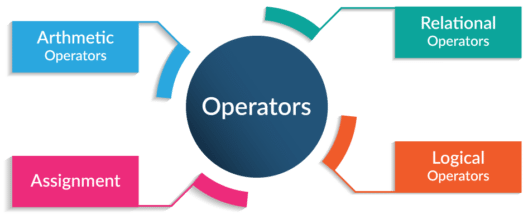
Arithmetic Operators: These operators help us perform the basic arithmetic operations like addition, subtraction, multiplication, etc.
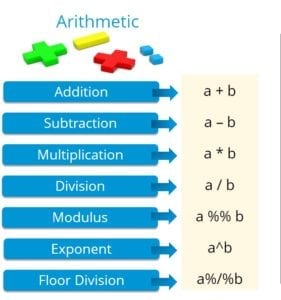
Consider the following example:
num1 = 15 num2 = 20 num3 = 0 #addition num3 = num1 + num2 num3 #substraction num3 = num1 - num2 num3 #multiplication num3= num1 * num2 num3 #division num3 = num1 / num2 num3 #modulus num3 = num1 %% num2 num3 #exponent num1 = 5 num2 = 3 num3 = num1^num2 num3 #floor division num3 = num1%/%num2 num3
Output:
[1] 35 [1] -5 [1] 300 [1] 0.75 [1] 15 [1] 125 [1] 1
Relational Operators: These operators help us perform the relational operations like checking if a variable is greater than, lesser than or equal to another variable. The output of a relational operation is always a logical value.

Consider the following examples:
num1 = 15 num2 = 20 #equals to num3=( num1 == num2 ) num3 #not equal to num3= ( num1 != num2 ) num3 #lesser than num3= ( num1 < num2 ) num3 #greater than num3= ( num1 > num2 ) num3 #less than equal to num1 = 5 num2 = 20 num3 = ( num1 <= num2 ) num3 #greater than equal to num3 = ( num1 >= num2 ) num3
Output:
[1] FALSE [1] TRUE [1] TRUE [1] FALSE [1] TRUE [1] FALSE
Assignment Operators: These operators are used to assign values to variables in R. The assignment can be performed by using either the assignment operator (<-) or equals operator (=). The value of the variable can be assigned in two ways, left assignment and right assignment.
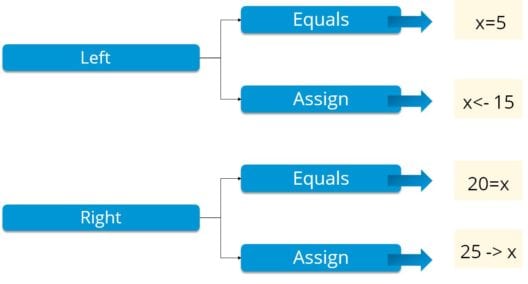
Logical Operators: These operators compare the two entities and are typically used with boolean (logical) values such as ‘and’, ‘or’ and ‘not’.
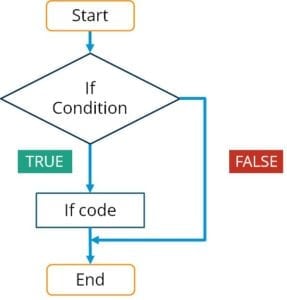 Consider the following example:
Consider the following example:
num1=10
num2=20
if(num1<=num2){
print("Num1 is less or equal to Num2")
Output:
[1] "Num1 is less or equal to Num2"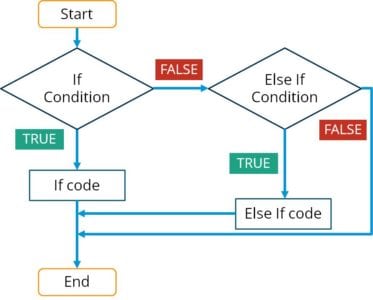
Num1 = 5
Num2 = 20
if (Num1 < Num2) print("Num1 is lesser than Num2") } else if( Num1 > Num2){
print( "Num2 is lesser than Num1") }
else if("Num1 == Num2){
print("Num1 and Num2 are Equal") }
Output:
[1] "Num1 is lesser than Num2"
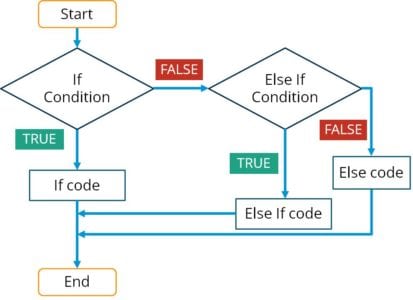
Consider the following example:
Num1 = 5
Num2 = 20
if (Num1< Num2) print("Num1 is lesser than Num2") } else if( Num1 > Num2){
print( "Num2 is lesser than Num1") }
else
print("Num1 and Num2 are Equal") }
[1] "Num1 and Num2 are Equal"
A loop statement allows us to execute a statement or group of statements multiple times. There are mainly 3 types of loops in R:

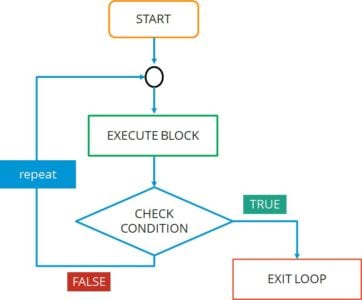
x=2
repeat {
x= x^2
print(x)
if(x>100) {
break
}
Output:
[1] 4 [1] 16 [1] 256
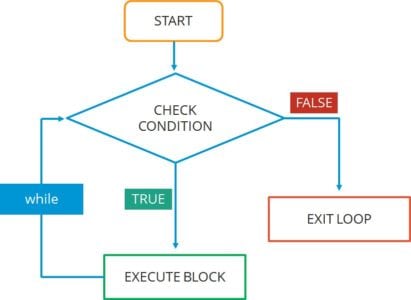
num = 1
sumn = 0
while (num<=11){
sumn =(sumn+ (num^2)
num = num+1
print(sumn)
}
Output:
[1] 1 [1] 5 [1] 14 [1] 30 [1] 55 [1] 91 [1] 140 [1] 204 [1] 285 [1] 385 [1] 506
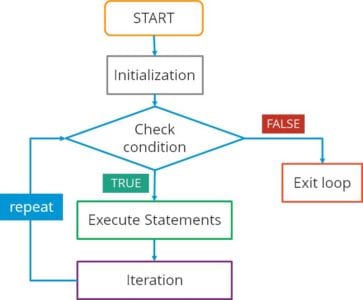
Let us now look at an example where we will be using the for loop to print the first 10 numbers:
for(x in 1:10){
print(x)
}
Output:
[1] 1 [1] 2 [1] 3 [1] 4 [1] 5 [1] 6 [1] 7 [1] 8 [1] 9 [1] 10
A function is a block of organized, reusable code that is used to perform a single, related action. There are mainly two types of functions in R:
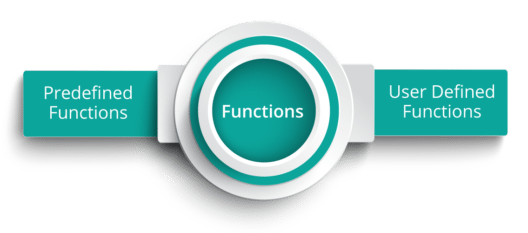 Predefined Functions: These are built in functions that can be used by the user to make their work easier. Eg: mean(x), sum(x) ,sqrt(x),toupper(x), etc.
Predefined Functions: These are built in functions that can be used by the user to make their work easier. Eg: mean(x), sum(x) ,sqrt(x),toupper(x), etc.
User Defined Functions: These functions are created by the user to meet a specific requirement of the user. The below is the syntax for creating a function in R:
function_name <–function(arg_1, arg_2, …) { //Function body }
Consider the following example of a simple function for generating the sum of the squares of 2 numbers:
sum_of_square <- function(x,y) {
x^2 + y^2
}
sum_of_sqares(3,4)
Output:
[1] 25I hope you have enjoyed reading this R programming blog. We have covered all the basics of R in this tutorial, so you can start practicing now. After this R programming blog, I will be coming up with more blogs on R for Analytics so stay tuned.
Now that you have understood basics of R, check out the R Certification Training by Edureka, a trusted online learning company with a network of more than 250,000 satisfied learners spread across the globe. Edureka’s Data Analytics with R training will help you gain expertise in R Programming, Data Manipulation, Exploratory Data Analysis, Data Visualization, Data Mining, Regression, Sentiment Analysis and using RStudio for real life case studies on Retail, Social Media.
Got a question for us? Please mention it in the comments section of this “R Programming” blog and we will get back to you as soon as possible.
 Thank you for registering Join Edureka Meetup community for 100+ Free Webinars each month JOIN MEETUP GROUP
Thank you for registering Join Edureka Meetup community for 100+ Free Webinars each month JOIN MEETUP GROUPedureka.co
Thanks for sharing this information.Is it sufficient or I join a training center for R-programming so that I can learn more ?